FighterJock
ACCESS: Above Top Secret
- Joined
- 29 October 2007
- Messages
- 5,596
- Reaction score
- 5,923
It looks as if it is bluring where the line falls between a Jupiter sized planet and a failed Brown Dwarf star.
It looks as if it is bluring where the line falls between a Jupiter sized planet and a failed Brown Dwarf star.
Hello and welcome! My name is Anton and in this video, we will talk about major updates from Uranus and its moons
Links:
https://iopscience.iop.org/article/10...https://www.youtube.com/redirect?ev....org/article/10.3847/PSJ/ad77d7&v=JNLSQ3H-Bp0
https://agupubs.onlinelibrary.wiley.c...https://www.youtube.com/redirect?ev...ey.com/doi/10.1029/2024GL111623&v=JNLSQ3H-Bp0
https://iopscience.iop.org/article/10...https://www.youtube.com/redirect?ev...rticle/10.3847/2041-8213/ad566a&v=JNLSQ3H-Bp0
https://www.jpl.nasa.gov/news/mining-...https://www.youtube.com/redirect?ev...olves-several-uranus-mysteries/&v=JNLSQ3H-Bp0
https://www.nature.com/articles/s4155...https://www.youtube.com/redirect?ev...com/articles/s41550-024-02389-3&v=JNLSQ3H-Bp0
Previous Uranus videos:
https://www.youtube.com/watch?v=NM0hIskMD5E&t=0s
• JWST Takes a Look at Uranus Again, Fi...
• Evidence That Strange Molecules Insid...
• More Moons Found Around Uranus and Ne...
• JWST Takes a Look at Uranus Again, Fi...
• Exciting and Unexpected Discoveries F... https://www.youtube.com/watch?v=9ZFdYXvVcdo&t=0s
#uranus #miranda #arielhttps://www.youtube.com/hashtag/ariel
0:00 Major updates from Uranus
0:30 Hubble vs New Horizons images
2:35 Uranus thermosphere mystery and why it cooled down
5:00 Why it's important
6:25 Magnetosphere mystery and bizarre anomaly
9:18 Miranda probably has a huge ocean
11:15 Ariel seems to have volcanoes
13:15 What this means and conclusions

"Our spectroscopic results on the surface composition of 2024 PT5 are not conclusive due to the lack of a near-infrared reflectance spectra, but they are suggestive of a Lunar origin," the team wrote in their new paper. "We confirm that 2024 PT5 is a natural object with a visible spectrum consistent with that of an Sv-type asteroid, although it could also be classified as a Lunar mare breccia."
In short, our mini-moon could be a piece of the actual Moon moon, flung off into space following an impact event, now going on its own journey around the Solar System. Don't despair – while it is gone for a while, it is currently predicted to make a return close approach in 2055, two close approaches in 2084, and one in 2085. Before this, it will make another relatively close approach in January 2025, when NASA will reportedly make radar observations of our former mini-moon.

In this supercut, we recap and update on the DART mission, humanity's first attempt to change the course of an asteroid to protect our world from future planet-ending threats.
I recently got loaned a Unistellar Odyssey Pro digital telescope, this is a compact telescope for amateur astronomers which uses on board image accumulation to reveal deep sky objects like Nebula in ways a traditional purely optical telescope cannot. I had a few hours to play with this, mostly limited by the absolutely terrible weather that rolled into the area, no doubt a result of 'New Telescope Curse', and I'm extraordinarily impressed with the capabilities, and intrigued by the possibilities of working on real astronomical research.
Hello and welcome! My name is Anton and in this video, we will talk about a discovery of a strange black hole system that may solve the final parsec problem
Links:
https://www.aanda.org/component/artic...https://www.youtube.com/redirect?ev...doi=10.1051/0004-6361/202451305&v=snolGHQChVk
https://arxiv.org/abs/2311.03412
https://www.youtube.com/redirect?ev...ttps://arxiv.org/abs/2311.03412&v=snolGHQChVk
Additional videos:
https://www.youtube.com/watch?v=9AW8w4dvT_A&t=0s
• Final Parsec Problem - The Paradox of...
• Most Massive Black Hole Pair Ever Fou...
• Could Dark Matter Be Quantum In Natur... https://www.youtube.com/watch?v=Jr6updWU-vY&t=0s
#blackhole #binary #transient
0:00 Discovery of a binary super massive black hole
0:35 2021 explosions that made no sense
2:00 First explanations
2:30 More recent explanations
3:45 Simulation demonstrating what's happening
4:50 What could produce this and why it's important
7:05 Previous discovery that showed close black holes
7:40 Why this system is so important
8:15 Potential explanation using dark matter
9:10 Conclusions
Uranus and Neptune were only visited once by human spacecraft when Voyager 2 passed by them almost 40 years ago. During those visits, scientists measured peculiar magnetic fields unlike those seen around other planets. A recent paper suggests that the Uranus measurements might have been messed up by the Sun, but in general, it has been difficult to explain the behavior. New research suggests that the magnetic weirdness might be due to oceans below the atmosphere.
Giant planets tend to have gassy layers on the outside, liquid layers down below, and a solid core at their center. Burkhard Militzer from the University of California Berkeley has created a computer model to try and explain the magnetic field. It suggests that below the atmosphere of the planets, there is water, methane, and ammonia.

The Laser Interferometer Space Antenna - LISA is a set of 3 spacecraft which will work together to make a massive gravitational wave telescope in deep space, with arms millions of kilometers long it will be able to detect events at much lower frequencies, meaning we can detect black hole mergers months ahead of the event, and entirely new phenomena involving supermassive black holes.
The LISA spacecraft at there core use free flying gold cubes as reference masses for the telescope arms, and managing these so that they remain in free fall is a core capability that was so critical to the success of the mission that they launched the LISA Pathfinder mission to test the technologies needed for the final mission to prove that the system would maintain the levels of control required for good science.
Hello and welcome! My name is Anton and in this video, we will talk about the Finite Monkey Theorem and the discoveries from the study below:
https://www.uts.edu.au/news/health-sc...https://www.youtube.com/redirect?ev...hort-shakespeare-typing-monkeys&v=8ZIYeuUDKac
https://www.sciencedirect.com/science...https://www.youtube.com/redirect?ev...e/article/pii/S2773186324001014&v=8ZIYeuUDKac
https://en.wikipedia.org/wiki/Infinit...https://www.youtube.com/redirect?ev...rg/wiki/Infinite_monkey_theorem&v=8ZIYeuUDKac
http://news.bbc.co.uk/2/hi/3013959.stmhttps://www.youtube.com/redirect?ev...news.bbc.co.uk/2/hi/3013959.stm&v=8ZIYeuUDKac
Related Nobel videos:
https://www.youtube.com/watch?v=5i2U67TVsRI&t=0s
• Super Exciting AI Research by Google ...
• Here's Why the Nobel Prize In Physics... https://www.youtube.com/watch?v=E7B5J4hi0Zk&t=0s
End of Universe:• We Now Know How the Universe Will Pro...
https://www.youtube.com/watch?v=PyRf7B1Ji4A&t=0s
• Experimental Evidence of a Phenomenon... https://www.youtube.com/watch?v=PyRf7B1Ji4A&t=0s
Bizarre paradox of life:• Obscure Biochemical Paradox May Expla... https://www.youtube.com/watch?v=k_B9YP5nEWw&t=0s
#monkeys #shakespeare #mathhttps://www.youtube.com/hashtag/math
0:00 Infinite monkey theorem in the nutshell
1:00 History and how it all started
2:05 Actual experiment in the 2000s and what the monkeys did
3:25 New study and the analysis
4:40 Results is bananas
6:20 Graphs and what this means
7:30 How this connects to life on Earth and RNA world
8:40 Conclusions
Oops. The attribution is mistaken. In fact, the artist is Maciej Rebisz. Michel Lamontagne has indeed done much work for the Initiative for Interstellar Studies, particularly the Icarus project, but the illustrations for Hyperion are by Maciej Rebisz. These images are from his Bluesky account.More by the same artist, Michel Lamontagne.
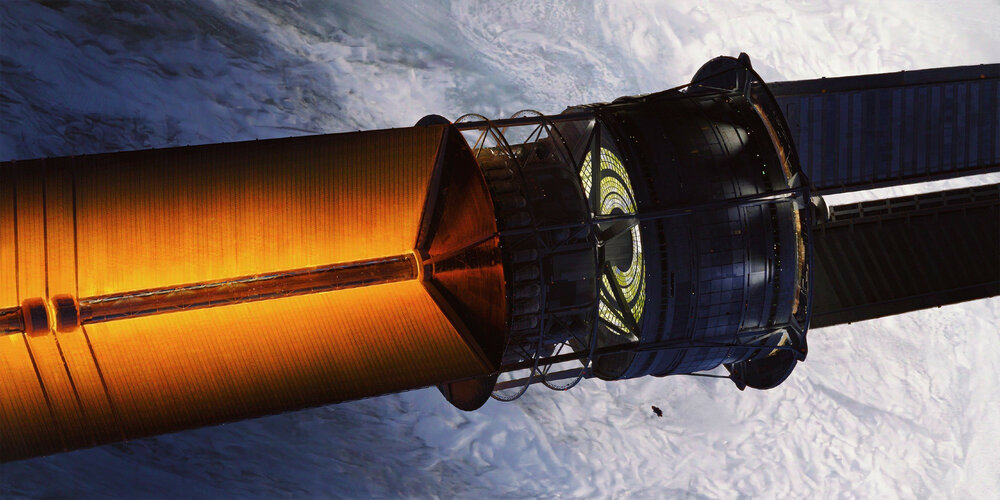
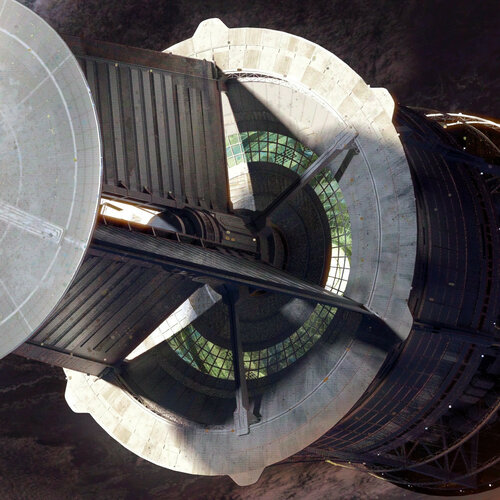
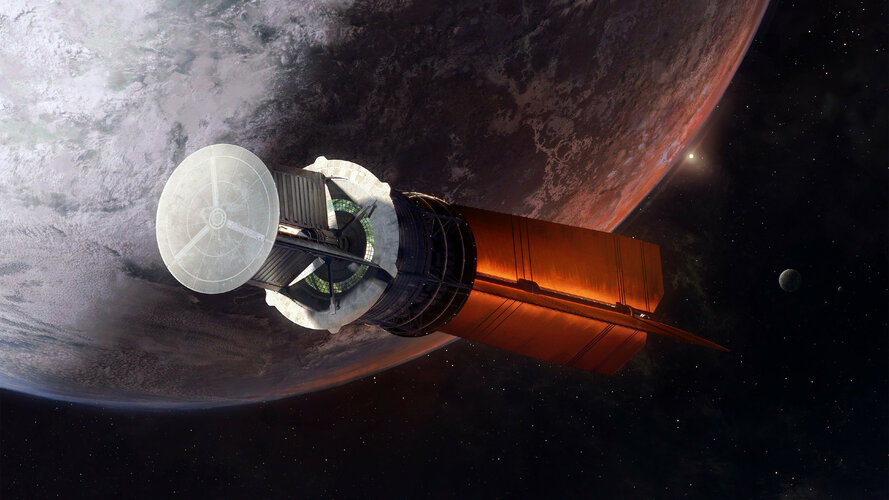
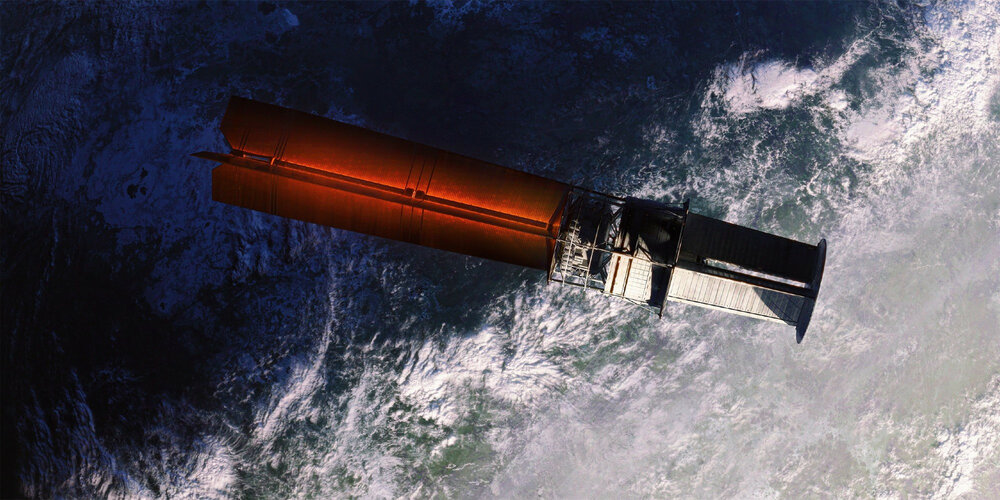
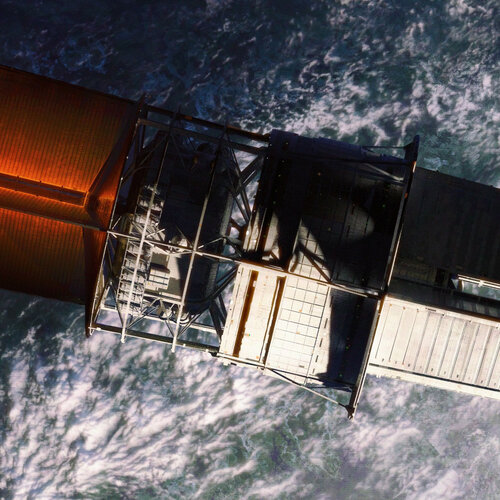
Dragonfly is taking a Falcon Heavy to Titan, What’s inside Uranus?, Russia’s cargo ship delivers a stinky smell to the station, and testing robots to go under the ice on Europa.
00:00 Intro
00:15 A ride for Dragonfly
https://www.nasa.gov/news-release/nas...https://www.youtube.com/redirect?ev...contract-for-dragonfly-mission/&v=D-xKbLrJb_g
01:30 Inside Uranus
https://news.berkeley.edu/2024/11/25/...https://www.youtube.com/redirect?ev...surfaces-of-uranus-and-neptune/&v=D-xKbLrJb_g
03:51 Europa Clipper unrolls its instruments
https://www.nasa.gov/missions/europa-...https://www.youtube.com/redirect?ev...les-down-instruments-deploying/&v=D-xKbLrJb_g
05:50 Robots for under the ice exploration
https://www.universetoday.com/169887/...https://www.youtube.com/redirect?ev...bots-that-might-explore-europa/&v=D-xKbLrJb_g
06:56 Baby planet
https://www.universetoday.com/169863/...https://www.youtube.com/redirect?ev...nd-a-3-million-year-old-planet/&v=D-xKbLrJb_g
08:17 Vote results
08:49 Haolong haoloooong
https://www.universetoday.com/169703/...https://www.youtube.com/redirect?ev...aolong-has-entered-development/&v=D-xKbLrJb_g
10:08 Russian spaceship stinks
https://arstechnica.com/space/2024/11...https://www.youtube.com/redirect?ev...astronauts-report-a-foul-smell/&v=D-xKbLrJb_g
10:50 Sombrero galaxy by JWST
https://www.universetoday.com/169895/...https://www.youtube.com/redirect?ev...-the-sombrero-galaxy-from-webb/&v=D-xKbLrJb_g
11:42 Alien-like Jupiter
https://www.universetoday.com/169920/...https://www.youtube.com/redirect?ev...-up-the-haze-at-jupiters-poles/&v=D-xKbLrJb_g
13:21 SLS fireplace
https://www.universetoday.com/169912/...https://www.youtube.com/redirect?ev...iday-fireplace-video-we-needed/&v=D-xKbLrJb_g
13:55 Questions for upcoming interviews
Host: Fraser Cain
Producer: Anton Pozdnyakov
Editing: Artem Pozdnyakov
Our Solar System formed 4.6 billion years ago. 3.8 billion years ago, it was relatively young. All the planets possibly had acquired stable orbits by that time. However, they appeared a lot different than they do today!
The history of the Earth from its formation to present day, covering major events throughout its 4-billion-year history. Estimates of average temperature, atmospheric composition, and day length are given. The reconstruction is based off of the companion video (• ⁸ᴷ Interactive Continental Drift ) with changes to the coastline.
Forgot to add this event, but the little boom is in the video.: (Impacts 2023Ma) Vredefort impact - This impact is the largest confirmed crater on Earth at 300 km wide. It is found in South Africa.
Watch the Solar System unfold!
Events document:https://docs.google.com/document/d/12...
When did the first ever stars form in the universe?
View: https://youtu.be/nTOsFVTaPSk?si=Scffoz6rnNktDw_R


An exploration of the Ryugu Asteroid Sample Contamination Mystery.
was it Human error or was some thing alive on Ryugu ?
View: https://www.youtube.com/watch?v=eLhqy2V_viw
If was not Human error, this is a future senario:
View: https://www.youtube.com/watch?v=YMbSpnlOOtE

An international study led by Australian astronomers has created the most detailed maps of gravitational waves across the universe to date. The study also produced the largest ever galactic-scale gravitational wave detector and found further evidence of a “background” of gravitational waves: invisible yet incredibly fast ripples in space that can help unlock some major mysteries of the universe.
Using the pulsar timing array, the researchers constructed a highly detailed gravitational wave map, improving upon existing methods. This map revealed an intriguing anomaly - an unexpected hotspot in the signal that suggests a possible directional bias.
“The presence of a hotspot could suggest a distinct gravitational wave source, such as a pair of black holes billions of times the mass of our Sun," said Miss Nathan. "Looking at the layout and patterns of gravitational waves shows us how our Universe exists today and contains signals from as far back as the Big Bang. There's more work to do to determine the significance of the hotspot we found, but this an exciting step forward for our field."

NASA's Juno spacecraft orbits Jupiter at 43,000 kilometers, capturing high-resolution images. Adaptive optics compensate for atmospheric distortion, enabling the observation of Jupiter's distinct atmospheric bands and powerful magnetic field. Juno's data reveals jet streams reaching speeds up to 300 kilometers per hour, the massive Great Red Spot (diameter ~16,000 kilometers), and an internal structure consisting primarily of rock and metallic hydrogen.
Juno's observations proves data into Jupiter's atmospheric composition: 90% hydrogen, 10% helium, with trace amounts of methane (0.0001%), ammonia (0.002%), and water vapor (less than 0.0005%). The planet's mass (1.898 × 10^27 kilograms) aids in understanding element distribution during solar system formation. Juno also tested the gravitational lensing, bending light rays due to Jupiter's immense gravity. This effect potentially reveals hidden structures within our solar system.
Renders of Juno spacecraft and Jupiter planet were made by iGadgetPro
Credit for real-world photos of Jupiter by Juno: NASA/JPL-Caltech/SwRI/MSSS
Credit for real animation of the Great Red Spot: NASA/JPL-Caltech/SwRI/MSSS/Gerald Eichstadt/Justin Cowart
All source RAW-images were processed, colorized and edited by iGadgetPro
Timecodes
0:00 - Introduction to Jupiter's appearance and Juno (renders by iGadgetPro)
0:24 - Juno's camera technology and overcoming diffraction
1:30 - Planetary science and Juno's data on Jupiter's atmosphere
2:15 - Jupiter's atmospheric composition and its significance
2:50 - Gravitational lensing explained through Juno's observations
3:15 - Juno's impact on understanding planetary science and solar system origins
Theoretical study suggests that small black holes born in early universe may have left behind hollow planetoids and microscopic tunnels, and that we should start searching rocks and old buildings for them

Asteroid #C0WEPC5 (temporary designation) entered Earth's atmosphere at 16:15 UTC/17:15 CET, creating a fireball over Yakutia witnessed by people in the region.
The object was discovered roughly 12 hours ago and is thought to have been around 70 cm across.
Thanks to observations from astronomers around the world, our alert system was able to predict this impact to within +/- 10 seconds.
Asteroid 2020 XR will safely fly past Earth on 4 December 2024 at 05:26 UTC (06:26 CET). It is between 300 and 700 m across and will pass just under six times the distance from Earth to the Moon.
When astronomers discovered 2020 XR, exactly four years ago, they briefly thought it had a small chance of colliding with Earth in 2028. But by looking back at older observations of the sky, they spotted the asteroid in existing data and used this additional information to more accurately calculate its orbit around the Sun and rule out any chance of Earth impact for at least the next 100 years.
A mysterious object discovered in the main asteroid belt in 2021 was determined to be a main-belt comet by Planetary Science Institute Senior Scientist Henry Hsieh, Scott Sheppard of the Carnegie Institution for Science and Audrey Thirouin of Lowell Observatory.
Hsieh and his colleagues observed active asteroid 456P/PANSTARRS twice using the Magellan Baade Telescope and Lowell Discovery Telescope in October 2024 to establish its status as the 14th confirmed main-belt comet. They published their findings in Research Notes of the American Astronomical Society.

 www.psi.edu
www.psi.edu
The rocks, both several miles wide, hit Earth about 25,000 years apart, leaving the 60-mile (100km) Popigai crater in Siberia, Russia, and the 25-55 mile (40-85km) crater in the Chesapeake Bay, in the United States - the fourth and fifth largest known asteroid craters on Earth.
The new study, published in the journal Communications Earth & Environment, found no evidence of a lasting shift in climate in the 150,000 years that followed the impacts.
The researchers inferred the past climate by looking at isotopes (atom types) in the fossils of tiny, shelled organisms that lived in the sea or on the seafloor at the time. The pattern of isotopes reflects how warm the waters were when the organisms were alive.


You'd need something Ceres sized or thereabouts for that.
The destruction of Earth due to impact with a planet killer asteroid. I'll pretend its Ceres (950km diameter).Footage thanks to Discovery Channel's program "Miracle Planet". These clips are from the first episode.
Hello and welcome! My name is Anton and in this video, we will talk about the youngest planet ever discovered and why it's such an exciting finding
Links:
https://www.nature.com/articles/s4158...https://www.youtube.com/redirect?ev...com/articles/s41586-024-08123-3&v=ofkqKauwS1c
https://uncnews.unc.edu/2024/11/21/un...https://www.youtube.com/redirect?ev...the-youngest-transiting-planet/&v=ofkqKauwS1c
Other videos:
https://www.youtube.com/watch?v=QMaCh38PjIY&t=0s
• Finally! Exciting Planet Found Only 6...
• Brown Dwarfs Surprise Again! Weather ...
• Strange Terrestrial Planet With a 5 H... https://www.youtube.com/watch?v=idohfn-EceY&t=0s
#exoplanet #tidye #astronomy
New research suggests that Ceres might actually be producing the organic compounds itself.

An asteroid hitting a neutron star could release enough energy to power humanity for 100 million years, more than enough to explain fast radio bursts!

